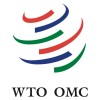Agenda
October 15th-17th 2025 | Budapest
Plenary sessions capture the global forces shaping the future for markets everywhere. Geopolitical uncertainty and rising US-China tensions are in sharp focus, including the threats to global trade, supply chains, markets and corporations. Leading economists will discuss growth in the US, Europe, and China, and the trends in markets, inflation, and interest rates. Artificial intelligence (AI) is explored as a global game-changer, with discussions on its potential to revolutionize industries, current adoption challenges, and the future of AI in business. Evolving financial infrastructure is also in focus, including Basel IV, the development of central bank digital currencies (CBDCs), and the growth of stablecoins and cryptocurrencies. Analysis too on the economic impacts of climate change on markets and progress towards decarbonization goals. And a group treasurer’s roundtable will focus on strategic priorities for navigating all these technological, geopolitical, and economic changes.
AI is a major focus for corporates and for treasury teams, with many treasurers experimenting with AI tools across core functions including cash forecasting, fx management and hedging and payments. This stream highlights AI case studies and real-world examples of AI applications in treasury, showcasing successful implementations and lessons learned. Examples include the evolution of robotic process automation with AI for enhanced efficiency and handling complex treasury processes as well as how AI can be used to analyze data in treasury systems for improved forecasting and risk management. Sessions will cover Coding for treasurers, learning basic coding skills to improve data processing and reporting between treasury applications as well as data visualization, using tools to effectively communicate treasury data and gain insights into cash flow, liquidity, and risks.
Cash management is the core focus of stream two, covering all the recent advances in the technologies and practices that are driving ever greater cash efficiency in treasury. Key areas for exploration include leveraging AI for enhanced cash forecasting, the art and science of variance analysis, solutions to achieving global cash visibility, and optimizing cash efficiency through pooling and netting. Treasurers and global cash managers address strategies for freeing trapped cash in challenging jurisdictions and evolving cash investment strategies as interest rates fluctuate. We also dive deep into new advances in FX automation and hedging in the AI era.
Financing comes into focus in stream 3, with sessions covering capital structuring reviews, loan markets pricing for both investment-grade and high yield credits, and bond market analysis, to map funding strategies through rate uncertainty. We also take in the growth of sustainable finance, including green bond issuance. The evolving role of banks and non banks in liquidity management is examined, alongside working capital and balance sheet optimisation. Supply chain finance (SCF) programs and trade finance in a volatile trade amid rising tariffs, are explored in the context of efficient working capital management.
Risk management takes centre stage in stream 4, with sessions dedicated to creating treasury warning systems to mitigate financial and operational risks. Treasurers share strategies on how to best manage a spectrum of risks to ensure optimal cash management across treasury and the business. Sessions cover managing risks in automated FX and derivatives hedging systems, and strategies for managing counterparty and financial institutional risks. Ensuring compliance with AML, KYC, and sanctions regulations as well as fraud and cybercrime are in focus, together with the treasurer’s role in ESG reporting. Collaboration with tax teams for optimal cash operations, as well as managing treasury risks during acquisitions and divestitures is also covered to complete the stream.
People are the subject of stream 5, in the context of the transformation of treasury in the age of AI and automation. Sessions explore the evolving skill sets required for future treasury teams and the strategic and operational impact of AI on treasury functions. We dive into best practices for leading Diversity, Equity, and Inclusion (DEI) initiatives and their backlash. Talent management is addressed through discussions on next-generation talent acquisition, retention, and succession planning. Change management strategies and skills also come in focus as treasury evolves and adapts to technological and operational change. In operations, treasurers explore advances in cloud-based treasury systems, the complexities of regional treasury management, the evolving landscape of operational risk management in automated processes and the potential impacts of AI on business process outsourcing for treasury functions are all discussed by treasury leaders.
The rapid evolution of payment technologies in business and treasury operations, is the focus of stream 6. The B2B payments revolution, including real-time payments, AP and treasury systems are scrutinised. We also examine the development of corporate digital wallets for the era of digital currencies. Also in focus are best practice in receivables and payables financing strategies to leverage payments for working capital, the automation of AP/AR processes for increased cash efficiency, as well as payment messaging and next generation cross-border payment technologies. Developing in-house banking structures for accelerating cash and payment efficiencies across the group are discussed by payments professionals and treasury experts.
Registration and light breakfast
Conference welcome and opening remarks
Geopolitical uncertainties in a divided world
Geopolitical tensions and their impacts on global trade have risen to the top of both political and corporate agendas, in an increasingly divided world. US and China rivalry and mistrust, magnified in the new Trump era, has heightened trade tensions, disrupted supply chains, increased costs, introduced technology restrictions and impacted corporate profitability. War in the Middle East continues to disrupt commodity markets, and the Ukraine Russia war has heightened energy and food security in Europe. The introduction of tariffs by the new Trump US administration on foreign imports, especially from China, has accelerated de-globalisation, friendshoring and nearshoring, and domestic production. In this session our keynote speaker will look ahead into 2026 and the rest of the decade and predict how geopolitical tensions will play out, what longer term trends are emerging, and the potential scenarios that corporates need to prepare for in managing current and future geopolitical risks.
-
Jose Manuel Barroso
Former Prime Minister of Portugal and former President of the European Commission
X
Jose Manuel Barroso
Former Prime Minister of Portugal and former President of the European Commission
José Manuel Barroso is the Former President of the European Commission and the Former Prime Minister of Portugal.
In 1999, Barroso was elected president of the Portugese Social Democratic Party and became the leader of the opposition. In 2002, he was elected Prime Minister of Portugal and in 2004 he was nominated as President of the European Commission. Barroso remained in the Presidency for two five-year terms where he played an influential role in the passing of the Treaty of Lisbon, responding to the financial crisis and incorporating new members in the European Union, as the EU went from 15 to 28 countries between 2004 and 2014.
On behalf of the EU, José Manuel Barroso received the Nobel Peace Prize in 2012 and gave the acceptance speech together with the President of the European Council.
Since 2016 he is Non-Executive Chairman of Goldman Sachs International and Advisor to Goldman Sachs and since 2021 José Manuel Barroso is Chair of the Board of Gavi, the Vaccine Alliance. Gavi is a public–private global health partnership with the goal of increasing access to immunization in poor countries, supporting the immunization of almost half the world’s children.
Barroso’s academic positions included visiting professor at Georgetown University. Most recently, he was visiting professor of International Economic Policy and a policy fellow at the Woodrow Wilson School, at Princeton University.
October 15th 2025-
09.10am -10.00amGeopolitical uncertainties in a divided world
-
Trade offs: managing uncertainty amid tariff chaos
The recent tariff chaos has generated significant market uncertainty and volatility, prompting increased bilateral trade negotiations between countries, such as the US and China, and the UK and India. Although markets have recovered from the initial tariff announcements, businesses and investors continue to evaluate the long-term consequences. Factors such as downward US growth revisions, inflationary pressures, global supply chain disruptions, stock market instability, higher treasury yields, and a weaker dollar are causing investors to consider risks to corporate earnings and the potential impact of new trade agreements. While anticipated interest rate cuts may stimulate growth, central banks face the challenge of balancing these cuts against the inflationary effects of tariffs, uncertain employment data, and weakening demand. This session will examine ongoing tariff negotiations, completed and potential trade agreements, the impact on global trade, and strategies to manage risks to trade amid uncertainty.
Networking break
The networking breaks, held in the exhibition area, are your opportunity to network with peers, industry leaders, and solution providers and discuss new ideas sparked by the sessions. Maximise your time by booking one-on-one meetings in advance through the app.
Conference breaks into streams
Delegates can choose between 6 streams and the Treasury Inspiration stage. Please see the tabs at the top of this page.
B2B payments revolution: what's working for treasury
Consumers have been experiencing a phenomenal and rapid revolution in payments in recent years, from virtual cards, to embedded finance and BNPL, to faster instant payments, payments as a service and open banking, all of which has created an explosion of choice in the B2C payments world. Payments professionals say that technologies in the B2C consumer market are now gaining traction in the business market and that B2B payments are too undergoing a revolution. Open banking and the aggregation of accounts into a single view is one example, alongside account-to- account payments (A2A), with push payments and request to pay protocols now on stream in the EU. Real-time payments in the US are now available for higher value transactions of $1m. Initiatives to offer business merchants greater choice in cross border payments, such SEPA OCT Inst, with the EPI also in focus. In this session treasurers from both consumer and business markets discuss how new payment modalities and technologies are influencing their payments infrastructure and operations and the benefits for treasury.
Identifying the ideal treasury team of the future and the impact of AI
As technologies rapidly transform financial and treasury systems and operations, the need for new technology skills in treasury, becomes greater. The debate as to whether teaching the treasurer technology skills or teaching the technologist treasury skills is optimal continues in treasury circles. Whilst core competencies in cash and liquidity management always remain paramount, the composition of skills is evolving with technological change. Individuals with strong data analytics skills and an aptitude for leveraging AI and machine learning to optimise cash forecasting are in high demand. Whilst the IT team might be involved in the automation of back office treasury processes using APIs, treasurers also need to know how things work, under the hood. Then there is the question of what AI can really do now in the treasury, and how that impacts human resources and functions. In this session, treasurers discuss how teams are changing due to the impacts of technologies and more recently as AI applications are applied in treasury, and reimagine the future of treasury teams for the AI era.
-
Lukas Leuprecht
Director, group treasury, corporate finance
Aldi SÜD
X

Lukas Leuprecht
Director, group treasury, corporate finance
Aldi SÜD
October 15th 2025
Risk dashboard: creating a treasury warning system
Whilst not all treasurers have ‘chief risk officer’, tagged onto their job title, few treasurers would say that they do not have responsibility for financial and operational risks. Indeed, the role of the treasurer in financial risk management is becoming increasingly critical and has accelerated since the pandemic and the global supply chain crisis and inflationary markets that followed. Even as inflation and rates ease, price spikes and volatility remain in global markets, giving rise to shocks to cash and working capital positions across the company. As the custodians of the company’s financial health, the treasurer’s collaboration in risk systems and practices, in together with risk management colleagues, is essential to mitigate against potential losses.In this session treasurers share how they effectively manage risks, the risk assessment frameworks and scenario planning they utilise to project embed risk mitigation strategies to protect cash and capital.
Capital structuring review: creating the optimal debt and equity ratios
Group treasurers and their CFOs are increasingly engaged in strategically reviewing the capital structure of the company, given the elevated cost of capital in changing markets, even as rates fall. Capital structuring has risen to the top of the strategic agenda, as treasurers seek to maximise cash and capital and reduce debt as RCFs and loans reach refinancing or maturity. Core to this is a review of the debt and equity financing mix, to align with the corporate risk profile, rating and strategy of the business and its subsidiaries. Yet balancing debt and equity ratios, including asset leverage, liquidity and cash in moving rates and credit markets, in the light of future business earning targets is a tough task. Strategies on the table for creating optimal debt to equity ratios might include acquisitions, divestitures, or capex reviews, share buy-backs or rights issues. Options will vary for investment grade companies looking to enhance credit ratings, and non investment grade companies looking to minimise debt exposures. Whilst every company will have its own different financing needs and capital structuring requirements, the optimal structures will also be determined by tax laws, investor demands, banking partners, liquidity providers, and rating agencies. In this session, treasures who have undertaken a review of capital structures for group companies, discuss the strategic process of shaping an efficient capital structure that supports business growth.
Forecasting: AI future
Cash forecasting is undergoing transformational change, as artificial intelligence (AI) accelerates in capabilities and applications across finance and treasury. Now, AI can play a significant role in the development of cash forecasting that few could have until recently imagined. From sourcing, gathering and sorting relevant data in the business, to populating forecasting software and spreadsheets with financial information, to analysing historical trends and generating predictive data, AI assisted forecasting is ascending as a critical tool for treasurers. Whilst the potential of AI to significantly improve forecasts is clear, essentially the accuracy of AI assisted forecasting reflects the quality of the data that feeds it. In this session treasurers discuss their experimentation with AI forecasting, the challenges in integrating AI into cash forecasting processes, the technical know-how and help required to get AI up and running, the solutions they have found, and the results that speak for an AI future.
Advancing APIs: next level interoperability and automation
Treasurers are for the most part convinced of the benefits of APIs, and know that such interfaces do enable interoperability and automation between applications, systems and platforms with all the improvements of streamlined processes and enhanced efficiency that APIs deliver. Yet implementation of API technology projects require time and resources that many treasurers say that they do not have. Concerns also about different API standards and incompatibility and data aggregation issues still persist in API projects. Whilst ERP and TMS connections to banking portals enables near real-time data sharing, reduces manual data entry and error risks, there always seems to be one process that doesn’t quite connect due to interoperability issues that requires a technical fix. For the fortunate treasurers that have won the API jackpot of full interoperability, automating tasks and achieving glitch free data flow, the prize is the time to focus on more strategic matters, such as developing an AI strategy for treasury. Here we hear of treasurers who have solved the API puzzle, for those who are still figuring out how many pieces need to connect.
Lunch
Lunch
Lunch
Lunch
Lunch
Lunch
Collections: optimising cash conversion cycles
With the exception of moving physical cash in B2C retail environments, cash collection is essentially a process, often manual or semi- automated, of ensuring payments are collected at term and chasing outstanding invoices. Yet behind this process are efficiency gains in cash conversion cycles (CCC), enabling the optimal allocations of working capital in the business, as well as managing short term liquidity needs. With optimal DPO/DSO and CCC ratios, treasurers can effectively plan and control cash management processes with greater visibility and certainty. Effective management of CCCs in the business also enables actual and predictive data to populate forecasts, delivering greater accuracy in cash reporting and planning. Risks to collections, whether internal inefficiencies, or external events such as business disruptions, can create significant cash crunches and forecast fluctuations for unwary treasurers. Here treasurers share insights on fine tuning the collection and CCC processes, for optimal cash visibility.
Leading DEI best practice in corporate treasury
Diversity, Equity and Inclusion (DEI) has been prioritised in human resource planning and in management practices, and treasurers have a key role to play in driving best practices within their treasury teams and the wider organisation. Whilst DEI policies have been questioned by some policymakers and cancelled by the current US administration, with detractors arguing that such policies can promote diversity over merit, the overwhelming consensus and evidence is that companies perform better with diverse teams. In this session treasurers discuss how they support the development of an inclusive culture where diverse perspectives are valued and everyone, of all backgrounds, gender, ethnicity and disabilities, can contribute. Treasurers also reflect on the successes that DEI programs bring to the development of the treasury and the wider business, and how DEI initiatives and policies might evolve in the future.
Hedging and derivatives: new technologies and strategies
Derivatives are a core strategy for price stabilisation in volatile inflationary markets, especially in food, energy and commodities. As conflicts and uncertainties continue to threaten global markets and disrupt supply, forward contracts in particular can be critical instruments in ensuring continuity and avoiding price spikes. Yet such contracts are expensive, committing cash and liquidity away from day to day working capital requirements. Whilst treasurers regularly review hedging strategies to optimise capital, the process can be complex and require significant market data and intelligence to predict price trends and fluctuations. Predictive AI technologies and machine learning algorithms can analyse large arrays of market data to assess the potential impact of risk factors, helping treasures develop optimal hedging strategies. AI can also help automate the execution of hedging transactions, ensuring that treasurers can take advantage of real-time market movements Whilst technologies are nascent, the potential for AI to enhance hedging and derivatives strategies, mitigate financial risks in treasury is promising. Here treasures swap notes on their experiments and experiences.
Loan markets pricing evolution for IG and non-IG credits
Whilst most treasurers expect interest rates to continue to fall gradually from their recent peaks, rates are likely to remain well above pre-pandemic lows, or historical averages, and current refinancing rounds are likely to be at higher rates. Although inflation has fallen back significantly to around 2.5 percent in the US and Europe, inflationary pressures linger in markets, not least due to geopolitical conflicts, war and rising protectionism in the form of tariffs. Translated into loan markets, although spreads have tightened recently, the cost of borrowing remains elevated for investment-grade companies. Loan market for non-investment-grade borrowers has been more challenging, with wider spreads over benchmark rates, in line with credit risk profiles. In this session treasurers discuss the challenges in refinancing RCFs, and the cost of borrowing in the wider loan market, for both investment grade and non-investment-grade companies, and strategies to minimise credit risk and maintain ratings in an uncertain market.
Fine tuning variance analysis and accuracy
As cash forecasting accuracy becomes increasingly critical for liquidity and working capital management and across the business, the process of fine-tuning variance analysis, between forecasts, including those produced by FP&A teams, is crucial for treasurers. Identifying and understanding the drivers of historical variances and anomalies, by segmenting data to pinpoint specific areas of inconsistency is a priority for treasurers in the quest for greater accuracy, with AI models being developed to help in this process. Statistical methods such as moving averages or regression analysis, as well as analysis of external factors and economic conditions, can further enhance accuracy. Collaborating with business units to gather relevant data also provides insights for interpreting variances. Frequently reviewing and adjusting the forecasting analysis based on the latest data, can help treasurers to actively manage cash and forecast variance in cash positions and deliver greater accuracy. In this session we deep dive into the practice of variance analysis and the wins for cash management.
AI innovation: new treasury tools to take away
Everybody is experimenting with AI, in treasury and across the business. Treasurers tell of how they are teaching themselves, often in their spare time, how to master the curious mix of art and science of getting useful results from AI LLM models and educating themselves on the development of AI technologies in general. In particular, prompt engineering, and coding skills have caught the attention and imagination of treasurers who seek to fine tune treasury applications, most notably cash forecasting, for more accurate results. Treasurers talk of how they are, often clandestinely, experimenting with AI possibilities, sometimes in a vacuum of vague AI policies in terms of permissions and applications in the business. Here treasures shed light on their AI experimentations and developments, and even suggest some AI tips and tools to takeaway.
Real time realities: always on treasury tested
Advances in real time technologies with ‘always on’ data flows, delivering data to treasury applications, is transforming cash and liquidity management for treasurers that have enabled real time systems. With the advent of AI, algorithms can analyse large data sets in real time feeds, and populate applications, spreadsheets with data whilst identifying and flagging data patterns and trends impacting the forecast. Interoperability of real time systems including integration with banks and financial institutions, enables treasury to execute efficient transactions at speed. In this session treasurers share their experiences of real time treasury systems, discussing their advantages and current limitations, and how more advanced and sophisticated real-time data analytics and AI applications, will change the real time treasury of the future.
-
Eddy Jacqmotte
Group treasury manager
Borealis AG
X

Eddy Jacqmotte
Group treasury manager
Borealis AG
October 15th 2025-
02.45pm -03.30pmReal time realities: always on treasury tested
-
-
Floor Meeuwis
Liquidity Products Advisory
Société GénéraleX

Floor Meeuwis
Liquidity Products Advisory
Société GénéraleOctober 15th 2025-
02.45pm -03.30pmReal time realities: always on treasury tested
-
Next generation treasury talent and succession planning strategies
Senior treasurers, in the final years of their careers and approaching retirement, comment that the new group treasurers of tomorrow, millennials and GenZ, are rising stars with great skills and talent, yet succession planning is essential to ensure continuity and smooth transition to the next generation of treasury leaders. Both attracting and retaining next-generation treasury talent and identifying high-potential and high performing treasury leaders to mentor and nurture is a focus as group treasurers plan for stability in succession strategies. Developing a pathway for succession including mentorship programs in treasury disciplines and training in treasury technologies such as AI, data analytics, as well as strategic disciplines such as capital raising, cash investments and risk management are all essential competencies. Here treasurers discuss how they approach succession planning, and encourage the development of treasury talent and treasury leaders of the future.
-
Ellen Cornelissen
Treasury director
Filtration Group
X

Ellen Cornelissen
Treasury director
Filtration Group
October 15th 2025-
02.45pm -03.30pmNext generation treasury talent and succession planning strategies
-
M&A, divestments and spin offs: managing treasury turbulence
As the economic cycle turns, acquisition activity might yet see some uplift as companies recalibrate growth strategies, restructure operations and diversify in markets. As companies acquire competitors in M&A scenarios, or suppliers in strategic acquisitions, the treasury assimilates new people and technologies that come with the deal. Integrating new business lines, as well as plugging into additional treasury arms for reporting, requires some reengineering of systems and processes. As companies assimilate, efficiencies will be found in operations as processes migrate to central treasury systems. In this session we discuss the process of fusing treasury functions after mergers and acquisitions and the reengineering required in processes and technologies to ensure successful integration and manage treasury turbulence
Bonds: analysing global capital markets for corporate issuers and investors
Investment grade corporates in both Europe and the US have entered a period of relative stability in bond prices and yields after the volatility of the pandemic period and onset of geopolitical conflicts in recent years. With over two thirds of IG corporate bonds held with 3 to 10 year maturities, investors are currently yielding around 5 percent on investment grade bonds, with the composite bond index closer to 6 percent. With a trillions of dollars of bonds coming to maturity, and new bond issuance expected to exceed over $1.5 trillion dollars in the US and up to 9 trillion globally in 2025, CFOs and treasurers in multinationals are evaluating their bond financing strategies, as well as investment portfolios. As part of overall capital structuring and financing and liquidity planning, both US and European IG corporate bond markets are core to capital raising and funding strategies, and are currently experiencing high investor demand with oversubscribed issuance. In this session treasurers walk through the process of bond issuance in both IG and high yield issues, the planning and execution phases, and how corporate bonds play into overall debt and liquidity planning strategies for the business.
-
Dimitrios Siokis
Group treasurer
Coca-Cola Hellenic Bottling CompanyX

Dimitrios Siokis
Group treasurer
Coca-Cola Hellenic Bottling CompanyDimitrios Siokis is Group Treasurer at Coca Cola Hellenic. Dimitrios has strong background in Emerging Markets, Corporate Treasury, Risk/Portfolio Management & Structuring after spending 25 years in Buy/Sell side Banking and Advisory roles in UK, Luxembourg and Greece. Dimitrios is a Board Member for Hellenic Association of Treasurers (HAT).
October 15th 2025
Pooling for visibility
Cash pooling structures, treasurers say, provide greater visibility of global cash positions, centralising the cash balances from various accounts and entities across the geographical reach of the business, to give treasurers real-time visibility over cash balances and enhanced risk controls in cash and liquidity management. In reality, this global holistic view is not as complete as treasurers typically wish, as cash pooling is met with challenges across the globe. Some jurisdictions can make notional cash pooling difficult due to regulatory, tax and legal constraints and complexities that thwart structures, with both the US and China notable in this respect. Treasurers here activate cash sweeping to enhance cash visibility and treasury oversight. In this session, we discuss optimal pooling and sweeping structures and hear from treasurers who have battled with regulatory complexities to achieve a clear view of company cash across the globe.
Treasury process automation: the evolution of RPAs with AI
Whilst few treasurers claim to have actually seen a robot in the office, there are quite a number hiding in plain sight in treasury systems. Robotic process automation (RPA) solutions or bots, designed to automate repetitive, rule-based tasks, are being reinvented in the AI era, with the emergence of intelligent RPA bots that can handle complex processes, make decisions, and adapt to changing scenarios. AI enabled RPA bots can analyse large financial data sets, identify patterns, communicate with other systems via APIs, facilitating data flows and reporting in treasury. The net effect is automated operations, enhancing efficiency, accuracy, and compliance. Yet AI-driven RPA solutions are just emerging and the transformative evolution of AI integration is in its infancy. Here treasurers who have taken baby steps with AI RPAs extol their benefits.
Networking break
The networking breaks, held in the exhibition area, are your opportunity to network with peers, industry leaders, and solution providers and discuss new ideas sparked by the sessions. Maximise your time by booking one-on-one meetings in advance through the app.
Networking break
The networking breaks, held in the exhibition area, are your opportunity to network with peers, industry leaders, and solution providers and discuss new ideas sparked by the sessions. Maximise your time by booking one-on-one meetings in advance through the app.
Networking break
The networking breaks, held in the exhibition area, are your opportunity to network with peers, industry leaders, and solution providers and discuss new ideas sparked by the sessions. Maximise your time by booking one-on-one meetings in advance through the app.
Networking break
The networking breaks, held in the exhibition area, are your opportunity to network with peers, industry leaders, and solution providers and discuss new ideas sparked by the sessions. Maximise your time by booking one-on-one meetings in advance through the app.
Networking break
The networking breaks, held in the exhibition area, are your opportunity to network with peers, industry leaders, and solution providers and discuss new ideas sparked by the sessions. Maximise your time by booking one-on-one meetings in advance through the app.
Networking break
The networking breaks, held in the exhibition area, are your opportunity to network with peers, industry leaders, and solution providers and discuss new ideas sparked by the sessions. Maximise your time by booking one-on-one meetings in advance through the app.
AI: the global gamechanger?
Artificial intelligence is heralded as game changing technology for business, with the potential to revolutionise whole industries. Vast amounts of investment is being poured into AI technologies, in the belief and expectation that AI-powered applications will vastly improve efficiencies and automate processes, creating unparalleled productivity gains in a vast array of functions across the spectrum of industry. Yet current adoption of AI in business is cautiously slow, with AI applications and AI agents in development and under experimentation and yet to manifest in full commercial forms. For many there is little doubt that AI will be transformative and that corporations need to rapidly adopt technologies and develop applications to harness the power and promise of AI. Regulators are playing catch up especially in areas of data security, whilst governments in the west remain alert to AI espionage. In this our expert speaker projects the potential directions for AI technologies and the impacts on corporations and society as we move forward inexorably to our AI future.
-
Emmanuelle Ganne
Chief of digital trade and frontier technologies
World Trade Organization
X

Emmanuelle Ganne
Chief of digital trade and frontier technologies
World Trade Organization
October 15th 2025-
04.15pm -05.00pmAI: the global gamechanger?
-
Networking Reception
Day 1 ends
Plenary sessions capture the global forces shaping the future for markets everywhere. Geopolitical uncertainty and rising US-China tensions are in sharp focus, including the threats to global trade, supply chains, markets and corporations. Leading economists will discuss growth in the US, Europe, and China, and the trends in markets, inflation, and interest rates. Artificial intelligence (AI) is explored as a global game-changer, with discussions on its potential to revolutionize industries, current adoption challenges, and the future of AI in business. Evolving financial infrastructure is also in focus, including Basel IV, the development of central bank digital currencies (CBDCs), and the growth of stablecoins and cryptocurrencies. Analysis too on the economic impacts of climate change on markets and progress towards decarbonization goals. And a group treasurer’s roundtable will focus on strategic priorities for navigating all these technological, geopolitical, and economic changes.
AI is a major focus for corporates and for treasury teams, with many treasurers experimenting with AI tools across core functions including cash forecasting, fx management and hedging and payments. This stream highlights AI case studies and real-world examples of AI applications in treasury, showcasing successful implementations and lessons learned. Examples include the evolution of robotic process automation with AI for enhanced efficiency and handling complex treasury processes as well as how AI can be used to analyze data in treasury systems for improved forecasting and risk management. Sessions will cover Coding for treasurers, learning basic coding skills to improve data processing and reporting between treasury applications as well as data visualization, using tools to effectively communicate treasury data and gain insights into cash flow, liquidity, and risks.
Cash management is the core focus of stream two, covering all the recent advances in the technologies and practices that are driving ever greater cash efficiency in treasury. Key areas for exploration include leveraging AI for enhanced cash forecasting, the art and science of variance analysis, solutions to achieving global cash visibility, and optimizing cash efficiency through pooling and netting. Treasurers and global cash managers address strategies for freeing trapped cash in challenging jurisdictions and evolving cash investment strategies as interest rates fluctuate. We also dive deep into new advances in FX automation and hedging in the AI era.
Financing comes into focus in stream 3, with sessions covering capital structuring reviews, loan markets pricing for both investment-grade and high yield credits, and bond market analysis, to map funding strategies through rate uncertainty. We also take in the growth of sustainable finance, including green bond issuance. The evolving role of banks and non banks in liquidity management is examined, alongside working capital and balance sheet optimisation. Supply chain finance (SCF) programs and trade finance in a volatile trade amid rising tariffs, are explored in the context of efficient working capital management.
Risk management takes centre stage in stream 4, with sessions dedicated to creating treasury warning systems to mitigate financial and operational risks. Treasurers share strategies on how to best manage a spectrum of risks to ensure optimal cash management across treasury and the business. Sessions cover managing risks in automated FX and derivatives hedging systems, and strategies for managing counterparty and financial institutional risks. Ensuring compliance with AML, KYC, and sanctions regulations as well as fraud and cybercrime are in focus, together with the treasurer’s role in ESG reporting. Collaboration with tax teams for optimal cash operations, as well as managing treasury risks during acquisitions and divestitures is also covered to complete the stream.
People are the subject of stream 5, in the context of the transformation of treasury in the age of AI and automation. Sessions explore the evolving skill sets required for future treasury teams and the strategic and operational impact of AI on treasury functions. We dive into best practices for leading Diversity, Equity, and Inclusion (DEI) initiatives and their backlash. Talent management is addressed through discussions on next-generation talent acquisition, retention, and succession planning. Change management strategies and skills also come in focus as treasury evolves and adapts to technological and operational change. In operations, treasurers explore advances in cloud-based treasury systems, the complexities of regional treasury management, the evolving landscape of operational risk management in automated processes and the potential impacts of AI on business process outsourcing for treasury functions are all discussed by treasury leaders.
The rapid evolution of payment technologies in business and treasury operations, is the focus of stream 6. The B2B payments revolution, including real-time payments, AP and treasury systems are scrutinised. We also examine the development of corporate digital wallets for the era of digital currencies. Also in focus are best practice in receivables and payables financing strategies to leverage payments for working capital, the automation of AP/AR processes for increased cash efficiency, as well as payment messaging and next generation cross-border payment technologies. Developing in-house banking structures for accelerating cash and payment efficiencies across the group are discussed by payments professionals and treasury experts.
Registration and light breakfast
Economic outlook: market impacts of low growth, high debt economies
The global economic outlook for 2025-26 is forecast at 2.8 percent growth, according to IMF and World Bank projections, in a stable and steady scenario. Western developed economies are characterised by low growth and high debt, whilst developing economies in Africa and Asia will experience higher growth yet at rates below historical highs. Whilst inflation in the EU is 2.2 percent and US is 2.4 percent, US interest rates are higher at 4.5 with the EU at 2.25 percent currently. Uncertainty surrounding trade tariffs is likely to create inflationary pressures in global markets, whilst currently we are seeing the dollar weaken as the euro rises. Given the level of uncertainty, the Fed US might hold rates, or slow rate cutting, whilst the EU cuts rates to stimulate growth. In this session our economist panel focuses on inflation and rates in Europe and the US, and assesses how their economic trajectories will impact growth, rates and inflation both domestically and in developing markets, including China.
-
Megan Greene
External member of the Monetary Policy Committee
Bank of England
X

Megan Greene
External member of the Monetary Policy Committee
Bank of England
Ms Megan Greene was appointed to the Monetary Policy Committee of the Bank of England on 5 July 2023 for a three-year term.
She is a Senior Fellow at the Watson Institute for International and Public Affairs at Brown University and also teaches at London Business School. She serves on the Academic Advisory Committee at the San Francisco Federal Reserve and is a Senior Fellow in Global Macroeconomics at Chatham House. Ms Greene is an advisory board member of Rebuilding Macroeconomics and Econofact and a member of the Council on Foreign Relations and the Bretton Woods Committee.
Prior to her appointment, Ms Greene was the Global Chief Economist at Kroll, a business services and risk mitigation firm. She was also a Contributing Editor and regular columnist at the Financial Times, writing on global macroeconomics and policy. In addition, she served on the International Advisory Committee of the board of the Hong Kong stock exchange. Ms Greene previously served as a Senior Fellow at the Mossavar-Rahmani Center for Business and Government at Harvard Kennedy School and Global Chief Economist at John Hancock Asset Management.
She holds a BA from Princeton University and a MSc from Nuffield College, Oxford University.
October 16th 2025-
09.00am -09.40amEconomic outlook: market impacts of low growth, high debt economies
-
Group Treasurer’s roundtable: new strategic priorities in a changing world
The current pace of change in treasury and business is breathtaking, from new transformative technologies, including AI and automated processes, to geopolitical shifts in the US, Europe and China, to uncertainty and turbulence in markets with inflation, rates, and tariffs. Strategically navigating through these technological, geopolitical, and economic changes whilst aligning the treasury to support the business to adapt and grow in a changing world, is the challenge of the Group Treasurer. So how do Group Treasurer’s strategically prioritise and plan for change, to innovate, adapt and accelerate for growth? In this special roundtable session, Group treasurers discuss their priorities now and their vision for the future of the treasury.
-
Edwin Koopmans
Group treasury
Lufthansa
X

Edwin Koopmans
Group treasury
Lufthansa
October 16th 2025
Networking break
The networking breaks, held in the exhibition area, are your opportunity to network with peers, industry leaders, and solution providers and discuss new ideas sparked by the sessions. Maximise your time by booking one-on-one meetings in advance through the app.
Conference breaks into streams
Delegates can choose between 6 streams and the Treasury Inspiration stage. Please see the tabs at the top of this page.
Building the corporate digital wallet for digital money
‘Every treasury will need a corporate digital wallet soon, if they haven’t already got one’ was the view of a leading European treasurer, speaking on the subject of digital currencies. Central bank digital currency consultations, projects and pilots are underway in 130 countries, with 64 in advanced development phases and 11 launched, most notably in Nigeria. The US and the EU all have advanced CBDC projects, whilst China is currently testing the electronic renminbi in hundreds of transaction scenarios. As the debate continues about CBDC use cases and necessity, it certainly appears to be the case that CBDCs are coming soon to the treasury. So how should the treasury best prepare for the arrival of CBDCs and what impact will digital currencies have on treasury cash and liquidity operations? How will CBDCs sit alongside cryptocurrencies, if at all, in digital wallets and ledgers? And how can the treasury achieve payments interoperability, integrating CBDCs alongside traditional payment rails? In this session, treasurers and CBDC experts explore the impacts of CBDCs on treasury and what the treasury needs to do now to prepare for future digital money.
Change management and negotiating skills for treasurers
When discussing with treasurers the skills that they would like to most improve, perhaps surprisingly, soft skills are highlighted as much as technical skills. Surprising because we are so geared, some would say hard wired, into thinking about finance and technology skills in the treasury. Yet soft skills, including communication skills, change management skills, and negotiation skills, have all been cited by treasurers as essential tools in the treasurers suite. It makes sense – treasurers need to negotiate fees with banks and prices with suppliers, negotiate contracts with vendors and collaborate with internal stakeholders on a range of legal, risk and financial matters. Treasurers also need to effectively communicate change within their teams, such as new automated processes, as well as manage change in the external environment, such as changing rates. In short, treasury leaders need to be positive and persuasive communicators, that can negotiate well for treasury as well as effectively manage change in the evolving business environment. Our panel negotiates the topic, with convincing examples.
-
Julia Donegan
Global treasury director
Newell Brands
X

Julia Donegan
Global treasury director
Newell Brands
October 16th 2025-
11.00am -11.45amChange management and negotiating skills for treasurers
-
Treasury compliance: AML, KYC and sanctions
With some forty or more countries under trade sanctions and restrictions across China, Russia, Africa and the Middle East, and Latin America, multinational companies have a long list of compliance issues to manage in international trade. From managing sanctions, tariffs, as well as anti-money laundering (AML) regulations, treasury compliance teams is a critical responsibility, often with rapidly changing regulations as geopolitical scenarios evolve at pace. To effectively manage trade, including cash and FX transaction transactions, treasurers have to implement robust compliance protocols to avoid breaching restrictions and reputational risks. In this session, treasury compliance leaders talk us through the measures they put in place, to effectively monitor, control and prevent transactions across restricted territories. Treasurers discuss how to best work with regulatory authorities and financial institutions to ensure compliance across regional subsidiaries to protect global business.
Bank panel: innovation in corporate financing for treasury
Treasurers look to banking partners to provide not just the solid staples of sound bank account management and cash management services, but also to collaborate and innovate to deliver treasury products and services that meet their evolving needs in constantly changing markets. To achieve this, banking partners are evolving services to provide real-time visibility for treasurers into their cash positions, to enable better forecasting and liquidity and working capital planning. A central focus currently is on the development of artificial intelligence (AI) algorithms, to analyse historical data and trends to aid treasurers in cash flow projections, and connecting treasury data systems to bank portals to enable real time data flow. Banking partners are also helping treasurers automate FX risk management processes, and liquidity management processes, to create a dashboard of cash and liquidity positions. Treasurers and banking partners together discuss how they work to innovate and collaborate, including leveraging AI and automation, to improve treasury services.
Netting for cash efficiency
Intercompany netting has risen to the top of treasury priorities, as the focus intensifies on reducing costs and optimising cash efficiency across the business. organisations. In offsetting payables and receivables, netting is an essential tool in reducing transaction costs, especially between subsidiaries, and in cross border payments, minimising foreign exchange and exposure to currency fluctuations. In cash forecasting, netting improves accuracy by providing data on group cash positions and liquidity. Effective netting structures are then a win for treasurers, by utilising cash cash pools and improving working capital efficiency. Yet the netting process requires both process automation and technological optimisation of payables and receivables systems to operate a timely and effective system. Here treasurers who have fine tuned the process and reaped the rewards share their best practice.
Coding for treasurers: prompt engineering for efficiency
Curious treasurers with inquisitive minds, are wondering how to take their data applications to the next level. With such a strong focus on automation and AI applications, it’s not surprising that many treasurers have become curious about how to improve the efficiency and interoperability of treasury systems and software. Data manipulation and management for improved intelligence has motivated technologically minded treasurers to experiment with using GenAI for coding in languages such as SQL for databases, python for analysing data, and XML for data messaging. With stretched IT departments, and often limited resources for IT consultants, treasurers are taking an AI DIY approach to learning how to code to improve data processing and reporting between treasury applications. As advanced AI models are able to write code in many programming languages, the focus for treasurers is also on precise prompt engineering, to produce the required coding for the relevant applications. In this session we take a closer look at coding essentials and how they are being applied to fine tune systems to meet specific data needs.
Working capital optimisation and supply chain resilience
Working capital is under intense focus in the treasury in an era of elevated rates, tariffs and tax uncertainty, and inflationary pressures, weighing in on cost, capital and cash. Coupled with supply chain instability due to ongoing geopolitical conflicts, and uncertainty in markets, businesses are hyper focussed on ensuring supply chain security and resilience. For the treasurer, priorities are to optimise balance sheet assets to free up working capital, ensure receivables are locked and leveraged and that payments to suppliers are optimised in finance solutions. Digitisation of processes including the adoption of embedded finance in payments and supplier solutions, enables greater supply resilience and working capital optimisation. In this session we explore supplier and working capital strategies, and how treasurers and banking partners have succeeded in delivering optimal cash and liquidity to the business at the point of need.
Treasury in the cloud: managing risk in centralised operations
Few treasuries in multinational companies are without treasury management systems in the cloud now, linked to company wide enterprise resource planning networks. These technology stacks, increasingly hosted and virtual, are vital to treasury operations and enable secure anywhere accessibility for treasury teams. Yet the cloud is not infallible, access can be lost, cyberattacks can occur, data can be compromised and business operations disrupted. Decisions as to what data can go in the cloud and data that is on secure company servers, are critical security concerns that can impact operations and a key consideration in any treasury transformation project. In this session, treasurers who have cloud based ERP/TMS, discuss their data strategies and the pros and cons of building treasury in the cloud and how they see their systems evolving over the next year or so.
Fighting fraud and cybercrime with intelligent systems
As payment technologies move faster and more frequently, fraud remains a persistent threat, posing significant risks to business. As technological advances, especially in payments proliferate, so does the complexity of fraudulent methods deployed by bad actors and criminals. Fraudulent activities are diverse, from traditional check tampering to sophisticated cyberattacks and ever more innovative scams. Whilst everyone in the company has a role to play in combating fraud, treasurers must be especially vigilant in identifying and mitigating fraud risks, especially in payments and collections. Technology plays a pivotal role in combating fraud, providing treasurers and risk colleagues tools to detect, prevent and investigate fraudulent activities. Advances in artificial intelligence, machine learning and big data analytics are revolutionising fraud detection, enabling treasurers to analyse vast amounts of data, identify anomalies and raise fraud red flags. AI and ML algorithms can analyse historical transaction data, financial patterns and behaviour profiles to identify unusual and potential fraudulent activity in real time. In this session treasurers discuss their role in fraud prevention and detection and the smart technologies they use to help defend the treasury from crime.
Working capital and balance sheet management for treasurers
Even as interest rates gradually fall, the focus on maximising working capital ratios by leveraging balance sheet assets has not slipped down the treasurer’s list of priorities. By identifying assets, including receivables, inventory and securities, treasurers can exploit opportunities for generating liquidity for working capital purposes. Non-core assets, such as surplus real estate or equipment can also generate additional liquidity, by creating collateral for asset-backed financing, or repo agreements, to provide funding for business purposes and hedging programs where required. Here treasurers share insights and best practice in unlocking the value of balance sheet assets to generate working capital, manage liquidity and improve free cash flow to the business.
Freeing trapped cash: currency workarounds
Treasurers with operations in developing countries in Africa, Asia and Latin America are frequently frustrated with foreign exchange exchange controls that regulate the conversion of local currency, as well as the hard currency shortages, which hinders cash repatriation. Workarounds include the payment of dividends, and intercompany lending where permitted. Where cash cannot be repatriated easily, treasurers utilise local investments, for expansion, acquisitions, or debt. Other strategies include cash pooling and consolidating balances across multiple subsidiaries to optimise liquidity where possible. Whilst trapped cash is a perennial problem for treasurers, with regulations constantly evolving in different jurisdictions, the process of freeing cash requires both a centralised strategy and local expertise on the ground to manage country level complexities. Here treasures who have fought local trapped cash battles and won tell their stories from the field.
Data lakes: creating and connecting data to treasury systems
Big database systems, or data lakes, are evolving in the AI era. In recent years, corporate treasurers have sought to develop centralised pools of both structured and unstructured data, to enable greater visibility and information for cash and financial reporting. Data lakes are the focal point of integration projects to pool data from multiple internal and external sources, including banks, financial portals, investment platforms, and ERP systems, eliminating the need for manual data processing to enable treasurers to extract relevant datasets for forecasting, liquidity planning and risk management. Now, AI applications are evolving to enable AI models to automate and analyse data in data lakes, assisting the treasurer in the process of identifying and processing relevant data sets in forecasting and reporting. Connecting treasury systems to AI applications in data lakes is the next evolution in data-driven treasury management. In this session treasurers dive into the lake and swim towards solutions.
Lunch
Lunch
Lunch
Lunch
Lunch
Lunch
Embedded finance: enabling real time flows
Embedded finance is growing exponentially, with a fivefold increase from 2023 -2032, to $570bn in volume. Both in B2C and B2B markets, payment professionals and treasury colleagues are rapidly adopting embedded finance technologies to enable a greater range of payment and finance options for customers. As a core element in AP/AR digitisation strategies, embedded finance provides an automated payment rail that enhances interoperable real time payment modalities for treasury. Treasurers that embrace embedded finance, can create a strong flow of cash receivables, whilst enabling buyers to pay on terms. Embedded finance creates real time data that enables greater transparency and accuracy in cash flow management, enabling the treasurer to more accurately forecast free cash flow and liquidity for working capital. In this session we take a deep dive into the embedded payments ecosystem, and show how treasurers have planned, executed and enabled embedded technologies in their payments systems and the benefits that flowed. We also take a sneak peek at next gen, with AI.
Regional operational treasury management: structures for success
Even highly centralised treasury structures of multinational companies, headquartered in treasury centres in the US or Europe, often require that one or more local treasury offices are operational in countries where on-the-ground presence is needed to execute treasury functions. In the ‘one treasury, many countries’ model, the challenge to align regional in-country operations with centralised treasury processes and practices can be challenging. In developing countries, with foreign exchange controls and local regulations that restrict cash movement and currency convertibility, treasury teams need to workaround local laws to create efficient operational structures. Working with local banks and tax partners, local treasury teams are essential to mitigate against liquidity risks and hedge exposures, invest in local assets and repatriate cash. Here regional treasurers discuss their unique challenges in managing operations in countries, whilst aligning with centralised treasury structures, compliance and practices.
Working with tax teams for optimal and efficient cash operations
Treasurers are concerned to manage cash and capital in the most tax efficient way to preserve value and maintain optimal flows to the business. Essential then is the close collaboration and partnership between treasurers and both internal tax teams and external tax consultants to ensure the preservation of cash as it is moved around the business between entities, or across borders between countries, especially when repatriated from countries with foreign capital controls. As international corporate tax laws evolve, including tax avoidance and tax harmonisation rules, treasurers need to work with tax experts in ensuring good practice in compliance and reporting of cash on account and on balance sheet, across all corporate entities where they operate. In this session, treasurers and tax partners discuss how they work together to develop optimal strategies to stay compliant, eliminate risk and optimise cash operations from a tax perspective.
Optimising SCF programmes for efficient working capital ratios
The global supply chain market is growing exponentially, whilst estimates vary, global SCF volumes have risen by 21% year-on-year to US$2,184bn and funds in use are up by 20% YoY to US$858bn, according to a market leading report. The benefits of SCF programmes are clear, enabling treasurers to effectively create and strengthen supply chains and finance suppliers without the need to allocate millions of dollars of working capital, so optimising cash flow, and improving internal liquidity. With advanced SCF technologies that enable visibility into supplier invoices and payments, treasurers can stay in control of payment terms and drive efficiency in cash conversion cycles and working capital ratios. In this session treasurers discuss the optimal SCF set up, including negotiating with bank funders and suppliers, as well as SCF platform and technology providers, and disclosure and reporting requirements, to create a successful SCF program and a win-win for buyers and suppliers.
-
Roger Sutter
Group treasurer
Kuehne + Nagel
X

Roger Sutter
Group treasurer
Kuehne + Nagel
October 16th 2025-
02.00pm -02.45pmOptimising SCF programmes for efficient working capital ratios
-
FX: innovation and automation
Automation in FX transactions and hedging programs, is for many treasurers of multinational companies, a must have due to the high transaction volumes, complexity and combinations of currency pairs, variable spot rates, and local currency fluctuations on an intraday basis. Not least the time saved in manual processing, and efficiency gains in cash management and forecasting. Yet the FX automation process is sometimes limited by value and transaction type, with higher volume trades under human monitoring. Innovation in automation includes RPA processes to automate data entry and trade execution, and more recently treasurers have been testing AI models to assist in the automation process by monitoring currency movements. APIs also help connect TMS with trading platforms for data exchange and trade execution. Here treasurers demonstrate their innovation and improvements to FX automation by utilising recent technologies.
Show me the data again - visualisation tools for treasurers
Data visualisation applications have become essential tools for corporate treasurers for sharing and reporting financial and treasury data to business units and finance colleagues. Powerful software applications which enable treasurers to transform complex treasury data into clear visual and interpretable formats, such as interactive dashboards, charts, and graphs can provide treasurers with real-time insights into cash flow, liquidity, and risks. Treasurers can identify trends and patterns in cash flows, enable them to improve forecast accuracy and enhance visibility and communication of treasury information to colleagues, enhancing transparency across the business. Together with AI applications that he lp analyse and present data, visualisation tools are transforming how corporate treasurers manage and analyse financial information, so improving efficiency and performance in treasury management. In this session we look again at how tools are developing to better equip and help treasurers present data visually.
Unlocking value for corporate treasurers with ISO 20022
Leading corporates are already experiencing tangible benefits from the new global messaging standard, from reducing payment friction to improving cash management. Join our panel of experts and hear firsthand about the value and opportunities ISO 20022 is delivering in the corporate banking space. We’ll also explore real-life use cases showing how payment tracking drives efficiencies for the treasury community. Don’t miss this opportunity to learn how best to leverage ISO 20022 for all of your corporate treasury operations.
Operational risk management in automated treasury processes
As treasury becomes increasingly automated, with less manual interventions in processes, the natural concern is that actions might occur that introduce unchecked risks. An example might be the automated execution of FX trades beyond risk parameters, where algorithms need to be adjusted with revised risk tolerances and hedging policies to reflect rate fluctuations due to market events. Bugs, or exceptions or anomalies, can produce inaccurate results, which might perhaps be unchecked or unnoticed for some time. Whilst companies do of course have extensive operational risk practices and procedures, treasurers say that they need to ensure that operational risk practices extend into treasury processes and operations. With the advent of AI, such operational risk processes need also to have human oversight, to ensure that there is not an over-reliance on systems and software to detect faults or inconsistencies in processes. Here treasurers debate the extent to which they can effectively manage operational and process risks and the internal stakeholders, and technologies, that can assist in the exercise.
Treasury collaboration in ESG reporting and compliance
The extent of the treasurer’s involvement in corporate ESG initiatives is mainly focussed on four key areas: sustainable financing, sustainable investing, ESG KPIs in supply chains and SCF and carbon reduction in operations. As investors, shareholders, regulators, rating agencies, funds and customers now all demand greater transparency on ESG performance, treasurers need to meet ESG KPIs and work closely with compliance teams in the reporting process. Strong data gathering processes for ESG reporting and the publication of ESG data in reports to shareholders as well as disclosures to regulators is now required and expected and treasury compliance is essential. In this session, treasurers discuss their role and activities in ESG data gathering, monitoring and measurement, the technological tools that assist the process and how they work with internal ESG teams and external consultants to bring transparency and visibility in reporting.
Trade financing in an era of elevated tariffs and supply disruption
At a time of rising trade tariffs, especially in the US, and supply disruptions due to global conflicts, increasing challenges are emerging in managing and financing trade. For corporate treasurers involved in trade finance, these uncertainties and complexities elevate risks in global supply chains, impacting cash flow and liquidity. Yet whilst these uncertainties persist, treasurers are developing risk strategies, and diversifying trade financing and liquidity options to ensure the continuity of supply operations. In this session treasurers discuss how trade financing is changing in the era of tariffs and trade disruption, and the measures they can take with both internal business partners and external liquidity providers to enable effective risk management in the current trade environment. Consideration also, on the trade finance technologies, such as electronic trade documents and smart contracts, that increase trade finance visibility and improve and automate trade payables and receivables processes.
-
Alan Chitty
Group director, treasury, tax, ESG & procurement
Pepco
X

Alan Chitty
Group director, treasury, tax, ESG & procurement
Pepco
Experienced Finance Professional with large multinational career history in different sectors, finance functions and teams.Been privileged to work on numerous M&A Projects, DCM and Bank Financing, IPO, new Finance Team building and multiple Finance System implementations & Optimizations,
October 16th 2025-
02.45pm -03.30pmTrade financing in an era of elevated tariffs and supply disruption
-
Investments: cash strategies as rates change
Over half of surplus corporate cash is invested in money market funds globally, the rest in on deposit or in short dated securities. Whilst this ratio is unlikely to change, as interest rates fall, treasurers might review cash investment strategies to both optimise yields and diversify risks. Money market funds in both Europe and the US , remain a cornerstone for short-term cash management due to their inherent liquidity and low risks, even as returns on funds fall. As MMFs accounts can yield higher returns on cash than bank deposits, many treasurers use MMF as a cash deposit account, with instant, intraday liquidity. Yet whilst MMF are experiencing large inflows, recent events have prompted greater regulation of MMFs, with significant changes recently, both in the US and Europe. For treasurers with a mandate for higher yielding securities, cash investment strategies include a mix of short-duration bonds, treasury bills, and commercial paper, that can produce greater returns than MMF deposits. In this session treasurers explore cash investment strategies across bank deposits, MMFs, and short dated securities to analyse optimal cash portfolios as rates change.
Stretching technology: TMS extensions for data interoperability
For treasurers struggling with data interoperability and system compatibility issues with dated treasury management system (TMS), might consider developing bespoke API extensions using SQL, or relevant data coding. These extensions enable integration with treasury systems and platforms, enabling near real-time data flows and across applications. In developing APIs, TMS extensions create a gateway to treasury infrastructure such as ERP systems, databases and external bank portals. Whilst writing SQL code and re-engineering data pathways into and out of the TMS requires skills, resources and time that treasurers often do not have, and so internal and external help is often required. Yet the benefits of data interoperability, operational efficiency, and automated process that result from extension projects are worthwhile upgrades, enabling treasurers greater control over treasury cash management data. In this session we look at TMS extension case studies and the benefits that accrued to the treasury team.
Networking break
The networking breaks, held in the exhibition area, are your opportunity to network with peers, industry leaders, and solution providers and discuss new ideas sparked by the sessions. Maximise your time by booking one-on-one meetings in advance through the app.
Networking break
The networking breaks, held in the exhibition area, are your opportunity to network with peers, industry leaders, and solution providers and discuss new ideas sparked by the sessions. Maximise your time by booking one-on-one meetings in advance through the app.
Networking break
The networking breaks, held in the exhibition area, are your opportunity to network with peers, industry leaders, and solution providers and discuss new ideas sparked by the sessions. Maximise your time by booking one-on-one meetings in advance through the app.
Networking break
The networking breaks, held in the exhibition area, are your opportunity to network with peers, industry leaders, and solution providers and discuss new ideas sparked by the sessions. Maximise your time by booking one-on-one meetings in advance through the app.
Networking break
The networking breaks, held in the exhibition area, are your opportunity to network with peers, industry leaders, and solution providers and discuss new ideas sparked by the sessions. Maximise your time by booking one-on-one meetings in advance through the app.
Networking break
The networking breaks, held in the exhibition area, are your opportunity to network with peers, industry leaders, and solution providers and discuss new ideas sparked by the sessions. Maximise your time by booking one-on-one meetings in advance through the app.
In house bank: accelerating group efficiencies
Benefits of in-house banking (IHB) are many, not least the efficient pooling and distribution of working capital and internal liquidity across group companies and subsidiaries, the efficient execution of intercompany transactions and loans, and the centralised controls in POBOs for group entities. All of which contribute greatly to ever more efficient cash management practices for the group. In centralising treasury functions and pooling liquidity, the in-house bank optimises cash utilisation, reduces transaction costs, aligns payment processes, and improves visibility and control over cash and working capital. In an ideal IHB operation, risks are reduced, compliance is improved and costs are minimised. Yet IHB is not without downsides, including considerable set-up and maintenance costs especially in technology investment, compliance requirements, and internal treasury talent and technical expertise to ensure optimal structural and operational efficiencies in IHB activities. This session showcases treasurers that have succeeded in creating the best in class IHB systems.
The impact of AI on business process outsourcing for treasury
When discussing the impacts of AI on treasury, senior treasurers have highlighted that the areas most likely to be affected by the AI revolution are back office treasury functions, including data processing, which is often outsourced. We can potentially expect then, that business process outsourcing (BPO) for treasury, will be significantly impacted as AI functions and processes in data management evolve over time. In areas such as payments, accounts, reconciliation and FX transactions data entry, as well as ledger checking and fraud detection, all can be automated and accelerated by AI driven RPA processes. With the automation of back office functions, it is possible, indeed likely, that treasury will see the rapid transformation of shared services and BPO functions as AI technologies and applications evolve. The impacts of these changes on treasury, the wider business and the back office teams, is the subject of this session, where treasurers discuss how they will manage the changes that AI-powered processes will inevitably bring to the treasury.
Strategies for managing counterparty risks, including FI risks, in treasury
With recent bank failures in the rear view mirror and Basel IV capital and asset requirements strengthened further, corporate treasurers might be forgiven for seeing financial counterparty risks as relatively low, as suggested by a recent EuroFinance poll. Yet whilst financial institutional liabilities in the form of unrealised losses stood at $684 billion in the US in 2024, even where banks typically hedge their bond portfolios with credit default swaps, the FI market is still not without potential funding and liquidity shocks. In the financial markets, treasurers need to remain vigilant to potential counterparty risks, including financial institution (FI) risks, to safeguard corporate financial stability. One key strategy is to conduct thorough due diligence on potential financial counterparties, assessing their financial health, liabilities and risk management practices. In this session, treasurers discuss their approaches to financial counterparty risks, and strategies to manage risks, such as diversifying counterparty relationships across financial institutions to reduce the concentration of risk. Treasurers also share their methods of monitoring risk and the technologies and systems they use to track risks in liquidity provision and funding providers.
Sustainable finance: the exponential rise of GSSSB issuance
Treasurers are increasingly issuing green bonds, as well as borrowing in sustainability-linked loan markets. Global corporate green and sustainable bond issuance (GSSSB) reached $277 billion in 2024, with over US1trn in total market volume, according to S&P, as treasurers act to align corporate financing with environmental, social, and governance (ESG) goals, driven by increasing investor demand. Even as ESG funds experienced outflows in 2024, the market demand for corporate GSSSB debt remains strong as the market continues to grow into 2025. In this session treasurers walk through the process of GSSSB issuance, including the bond origination and syndication process with banking partners, prospectus and investor marketing, ratings and use of proceeds criteria in accordance with green bond standard regulations, and offer insights on best practice for successful issuance.
Bank panel - Innovation in cash management: power tools for treasurers
Every corporate treasurer is focussed on improving cash management processes and with an avalanche of new technology in recent years, many have evolved systems to ever greater degrees of efficiency. As API driven tools deliver real time cash visibility and payment data, with connectivity to multi-bank platforms and integration with TMS and ERP systems, cash management transformation is accelerating throughout corporate treasury. As new AI technologies manifest, the opportunities to innovate to create even more accurate data flows for forecasting and liquidity management are emerging. Diving deep into how banking partners and treasurers collaborate to improve and automate processes, we explore the rapid evolution of next generation real time AI enhanced tools to produce accurate forecasting and decision making in cash and liquidity management.
Fintech ROI: building the business case for new treasury tech
Here we cite a familiar story: when the company invested big capex in a treasury management systems several years ago, and spent a great deal of time and resources linking several ERP systems from businesses in the group, the transformation achieved in cash and liquidity management and reporting was then a significant improvement from the previous disparate and inefficient processes. Yet a deja vu feeling has emerged, as the TMS becomes sub-optimal and new systems and applications are incompatible. Enhanced with AI features, new fintech functionalities in cash forecasting and account management are providing greater capabilities and visibility in cash management. The problem I have now, said the treasurer, ‘is to prove to the CFO’s office that there will be significant ROI on this new fintech investment, and to do that, I need to gather data and build a business case. Who can help me do that?’ This panel will help show you how.
Strategic play in the ISO 20022 shift: ensuring treasury efficiency across multiple countries
With operations spanning over 60 countries, the Adecco Group faced a massive challenge: managing treasury across more than a thousand bank accounts, countless statement formats, and a highly fragmented back-office landscape. The global shift to ISO 20022 only intensified this complexity – bringing new risks, potential IT workload, and possible disruption across their banking network. Rather than treating ISO 20022 as a compliance hurdle, Adecco saw it as a strategic inflection point – an opportunity to streamline operations, drive consistency, and future-proof treasury processes. In this session we will share how Adecco is managing this transformation, how the rollout is being handled across complex markets, and what technical and strategic levers are enabling success.
Session to be confirmed
Session to be confirmed
Session to be confirmed
Session to be confirmed
Automating trade finance with APIs
Corporate treasurers and their trade finance colleagues are long done with form filling, rubber stamping, and wet signing documents and letters of credit agreements for trade financing. Digitisation of trade finance processes is a priority for treasury, yet the reality is for many, that there are chinks in the chain, where manual interventions are required. Now, in the era of AI and automation, instant liquidity from a host of liquidity providers is available via platforms with API connectivity to global banks, with all the insurance, risk and payment approvals embedded in the process. Given the potential benefits, a question that treasurers often ask is ‘how do I connect trade platforms to my TMS or ERP systems, and will they connect to all my banking partners and liquidity providers?’ Complete bank connectivity via APIs, and interoperability with internal systems is crucial to successful automation. The implementation of trade financing platforms and the embedding of systems to liquidity management and payment processes also needs to be managed as a key part of a treasury transformation project. In this session we hear from a corporate treasurer who has taken the trade platform challenge and successfully connected to multiple banking partners whilst integrating the platform to internal systems. We will also cover the benefits in liquidity and working capital management, and how systems might evolve in the era of AI.
Session to be confirmed
Session to be confirmed
AI case studies: vignettes in AI innovation
Panellists present brief examples on how they have applied AI technologies, either through their own in house development, or with the support of internal or external partners, to improve a (treasury) process, be it in cash management or forecasting, liquidity and working capital management, FX processes and transactions or risk and compliance. Panellists will demonstrate how they have harnessed AI to process and manage data to create greater efficiency, accuracy and speed of process, and share ‘under the hood’ workings of how they did it. Panellists will reveal new case studies in this session, and discuss shared challenges and solutions in managing AI innovation projects, and answer questions on how AI innovations and technologies can be further applied in treasury.
Day 2 ends
Plenary sessions capture the global forces shaping the future for markets everywhere. Geopolitical uncertainty and rising US-China tensions are in sharp focus, including the threats to global trade, supply chains, markets and corporations. Leading economists will discuss growth in the US, Europe, and China, and the trends in markets, inflation, and interest rates. Artificial intelligence (AI) is explored as a global game-changer, with discussions on its potential to revolutionize industries, current adoption challenges, and the future of AI in business. Evolving financial infrastructure is also in focus, including Basel IV, the development of central bank digital currencies (CBDCs), and the growth of stablecoins and cryptocurrencies. Analysis too on the economic impacts of climate change on markets and progress towards decarbonization goals. And a group treasurer’s roundtable will focus on strategic priorities for navigating all these technological, geopolitical, and economic changes.
Registration and light breakfast
Finance Infrastructure: the evolution of regulation and banking
Global financial infrastructure is ever evolving and two major developments in 2025 are the introduction of Basel IV and the consultations for the launch of digital currencies (CBDCs) in Europe. The development of central bank digital currencies by central banks around the world is likely to have a profound impact on the direction and evolution of financial market infrastructure in the future. CBDCs will revolutionise payment systems, improving efficiency and lowering costs, innovating cross-border payments, challenging the existing correspondent banking networks and driving the development of interoperability standards globally. The growth of stablecoins, and the rallying of cryptocurrencies after the US election, are also likely to accelerate the development of decentralised finance after the FTX fraud setback. In parallel,
Basel IV, introduces new capital requirements, risk assessments and regulatory reporting for financial institutions as supervisory authorities seek to strengthen financial systems and infrastructure. The impact of these developments will be analysed by our expert speakers, who will illuminate the future vision of financial architecture and digital money.
Climate change: the future of markets
With 2024 the hottest year on record, climate change is already upon us. Yet COP 29 demonstrated that the fossil fuel industry is still growing as efforts to decarbonise energy production gather pace. The corporate global movement towards net zero carbon emissions is gaining momentum, with a growing number of corporations making ambitious commitments to reduce or eliminate their greenhouse gas emissions. Over 14,000 companies have joined the United Nations Race to Zero campaign, pledging to halve their emissions by 2030 and achieve net zero by 2050. These companies represent around three quarters of global GDP, demonstrating the corporate imperative to address climate change. Yet calls for even faster action are gaining attention to accelerate decarbonisation to achieve the 1.5°C target set by the Paris Agreement. Regulatory controls including carbon taxes, as well as investor demands for decarbonisation may accelerate this further. In this session we look at the corporate movement on climate change and the impact on business and trade in the years to 2050 and whether goals are likely to be missed or met.
Networking break
The networking breaks, held in the exhibition area, are your opportunity to network with peers, industry leaders, and solution providers and discuss new ideas sparked by the sessions. Maximise your time by booking one-on-one meetings in advance through the app.
Scam Inc: the rise of global industrial scale fraud
Scams are soaring. The Kansas Heartland Tri-State Bank collapse in 2023, where the CEO embezzled $47m to invest in crypto, serves as a warning that fraud can appear anywhere. On a video call at the Hong Kong office of engineering firm Arup in 2024, deepfakes of senior executives, persuaded a finance officer to transfer $25m to scammers. When US cryptofirm FTX collapsed due to CEO malfeasance $32bn in equity was wiped, leading to multimillion dollar losses from private and institutional investors. In 2025, North Korean scammers syphoned $1.5 billion in Ethereum tokens from the cryptocurrency exchange Bybit. The list of high profile scams goes on and on. At a lower level, thousands of consumers and businesses lose thousands of dollars to scams and fraud daily. There is evidence that scams are now orchestrated on an industrial scale. The UNHRC estimates there there are 250 thousand ‘scam workers’ in Myanmar and Cambodia, and that the global figure could be as high as 1.5m workers. According to global scam reports, losses to scams 2024 reached $1trn. In this session, we hear how the scam industry now rivals the drugs trade in scale and what actions we must take to avoid loss.
Superhumans
At the time of writing the world’s oldest living person is Ethel Caterham, aged 115, who resides in a nursing home in Surrey England. To longevity gurus, like US tech billionaire Bryan Johnson, that age will be easily and routinely surpassed, as anti-ageing treatment advances and humans enhance. A century ago, life expectancy in the US was 47 years, and global average life expectancy was just 32 years, due to high child mortality. Today US citizens can expect to live to 78.5 years. Currently there are 573,000 centenarians in the world, mostly in the US, UK and Japan, whereas a century ago there were less than five thousand. The idea that humans can continue to expand lifespan, given the huge advances in medicine, genetic engineering, stem cell therapies, physiological and neurological enhancements, has gained growing popular following, and support amongst billionaire backers. Atos Labs, backed by Amazon founder Jeff Bezos, aims to develop anti-ageing therapies, whilst New Limit, co-founded by Open AI CEO Sam Altman, aims to treat disease by restoring young cell function. When we begin to think about the fusion of AI, robotics and anti-ageing, the image of the superhuman with a potentially unlimited lifespan emerges. In this session we discuss the development of longevity, the human enhancement industry, and and ethics in human evolution
Lunch
Conference closes
Registration Opportunities
Please submit the form and we will reach out to you with more information.
Thank you for showing interest in the event. We will reach out to you with more information on the registration process.
Download Brochure
Please submit the form and we will reach out to you with more information.
Thank you for showing interest in the event. We will reach out to you with more information on the registration process.